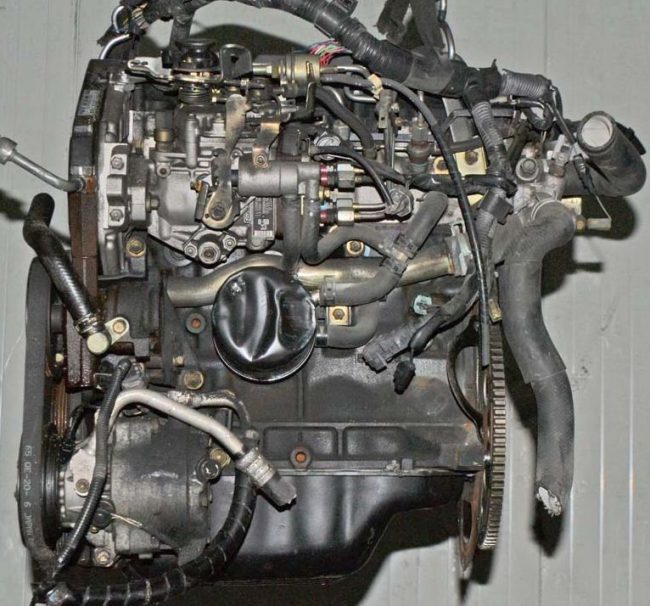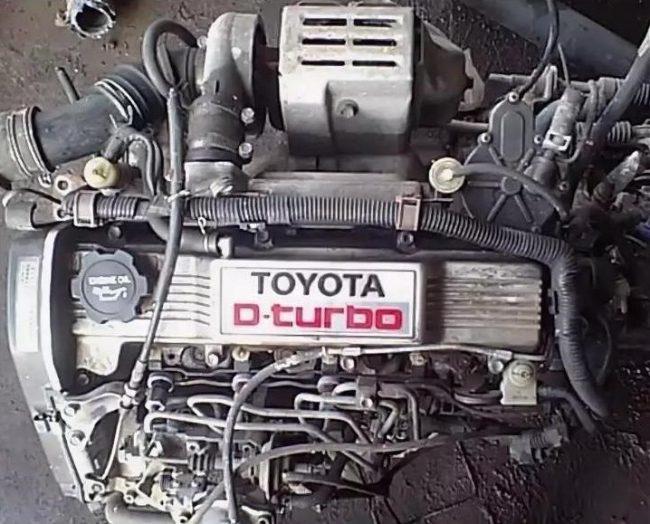
Engines Toyota 1N, 1N-T
Content
The Toyota 1N engine is a small diesel engine manufactured by Toyota Motor Corporation. This power plant was produced from 1986 to 1999, and was installed on the Starlet car of three generations: P70, P80, P90.

Until that time, diesel engines were used mainly in SUVs and commercial vehicles. Toyota Starlet with 1N engine was popular in Southeast Asia. Outside this region, the engine is rare.
Design features Toyota 1N

This internal combustion engine is an in-line four-cylinder internal combustion engine with a working volume of 1453 cm³. The power plant has a high compression ratio, which is 22:1. The cylinder block is made of cast iron, the block head is made of light aluminum alloy. The head has two valves per cylinder, which are actuated by a single camshaft. The scheme with the upper position of the camshaft is used. Timing and injection pump drive - belt. Phase shifters and hydraulic valve clearance compensators are not provided, the valves need periodic adjustment. When the timing drive breaks, the valves are deformed, so you need to carefully monitor the condition of the belt. Piston recesses were sacrificed in favor of a high compression ratio.
Prechamber type power supply system. In the cylinder head, on top of the combustion chamber, another preliminary cavity is made into which the fuel-air mixture is supplied through the valve. When ignited, hot gases are distributed through special channels into the main chamber. This solution has a number of advantages:
- improved filling of cylinders;
- smoke reduction;
- excessively high fuel pressure is not required, which makes it possible to use a relatively simple high pressure fuel pump, which is cheaper and more maintainable;
- insensitivity to fuel quality.
The price for such a design is a difficult start-up in cold weather, as well as a loud, “tractor-like” rattling of the unit throughout the entire rev range.
The cylinders are made long-stroke, the piston stroke exceeds the cylinder diameter. This configuration allowed to increase the turnover. Motor power is 55 hp. at 5200 rpm. Torque is 91 N.m at 3000 rpm. The engine torque shelf is wide, the engine has good traction for such cars at low revs.
But Toyota Starlet, equipped with this internal combustion engine, did not show much agility, which was facilitated by low specific power - 37 horsepower per liter of working volume. Another advantage of cars with a 1N engine is high fuel efficiency: 6,7 l / 100 km in the urban cycle.
Toyota 1N-T engine

In the same 1986, a few months after the launch of the Toyota 1N engine, the production of the 1N-T turbodiesel began. The piston group has not changed. Even the compression ratio was left the same - 22:1, due to the low performance of the installed turbocharger.
Engine power increased to 67 hp. at 4500 rpm. The maximum torque has shifted to the zone of lower speeds and amounted to 130 N.m at 2600 rpm. The unit was installed on cars:
- Toyota Tercel L30, L40, L50;
- Toyota Corsa L30, L40, L50;
- Toyota Corolla II L30, L40, L50.

Advantages and disadvantages of 1N and 1N-T engines
Small-capacity Toyota diesel engines, unlike gasoline counterparts, have not gained wide popularity outside the Far East region. Cars with a 1N-T turbodiesel stood out among their classmates with good dynamics and high fuel efficiency. Vehicles with a less powerful version of 1N were purchased with the aim of getting from point A to point B at minimal cost, which they successfully coped with. The advantages of these engines include the following:
- simple construction;
- insensitivity to fuel quality;
- relative ease of maintenance;
- minimum operating costs.
The biggest disadvantage of these motors is the low resource, especially in the 1N-T version. It is rare that a motor can withstand 250 thousand km without a major overhaul. In most cases, after 200 thousand km, compression drops due to wear of the cylinder-piston group. For comparison, large turbodiesels from Toyota Land Cruiser calmly nurse 500 thousand km without significant breakdowns.
Another significant drawback of the 1N and 1N-T motors is the loud, tractor rumble that accompanies the operation of the engine. The sound is heard throughout the entire rev range, which does not add comfort when driving.
Technical specifications
The table shows some parameters of N-series motors:
| Engine | 1N | 1NT |
|---|---|---|
| Number of cylinders | R4 | R4 |
| Valves per cylinder | 2 | 2 |
| block material | cast iron | cast iron |
| Cylinder head material | Aluminium alloy | Aluminium alloy |
| The piston stroke, mm | 84,5 | 84,5 |
| Cylinder diameter, mm | 74 | 74 |
| Compression ratio | 22:1 | 22:1 |
| Working volume, cm³ | 1453 | 1453 |
| power, hp rpm | 54/5200 | 67/4700 |
| Torque N.m rpm | 91/3000 | 130/2600 |
| Oil: brand, volume | 5W-40; 3,5 l. | 5W-40; 3,5 l. |
| Turbine availability | no | Yes |
Tuning options, purchase of a contract engine
N-series diesel engines are not well suited for power boosts. Installing a turbocharger with a higher performance does not allow a high compression ratio. To reduce it, you will have to radically redo the piston group. It will also not be possible to increase the maximum speed, diesel engines are extremely reluctant to spin above 5000 rpm.
Contract engines are rare, as the 1N series was not popular. But there are offers, the price starts from 50 thousand rubles. Most often, engines with significant output are offered; motors stopped producing more than 20 years ago.

